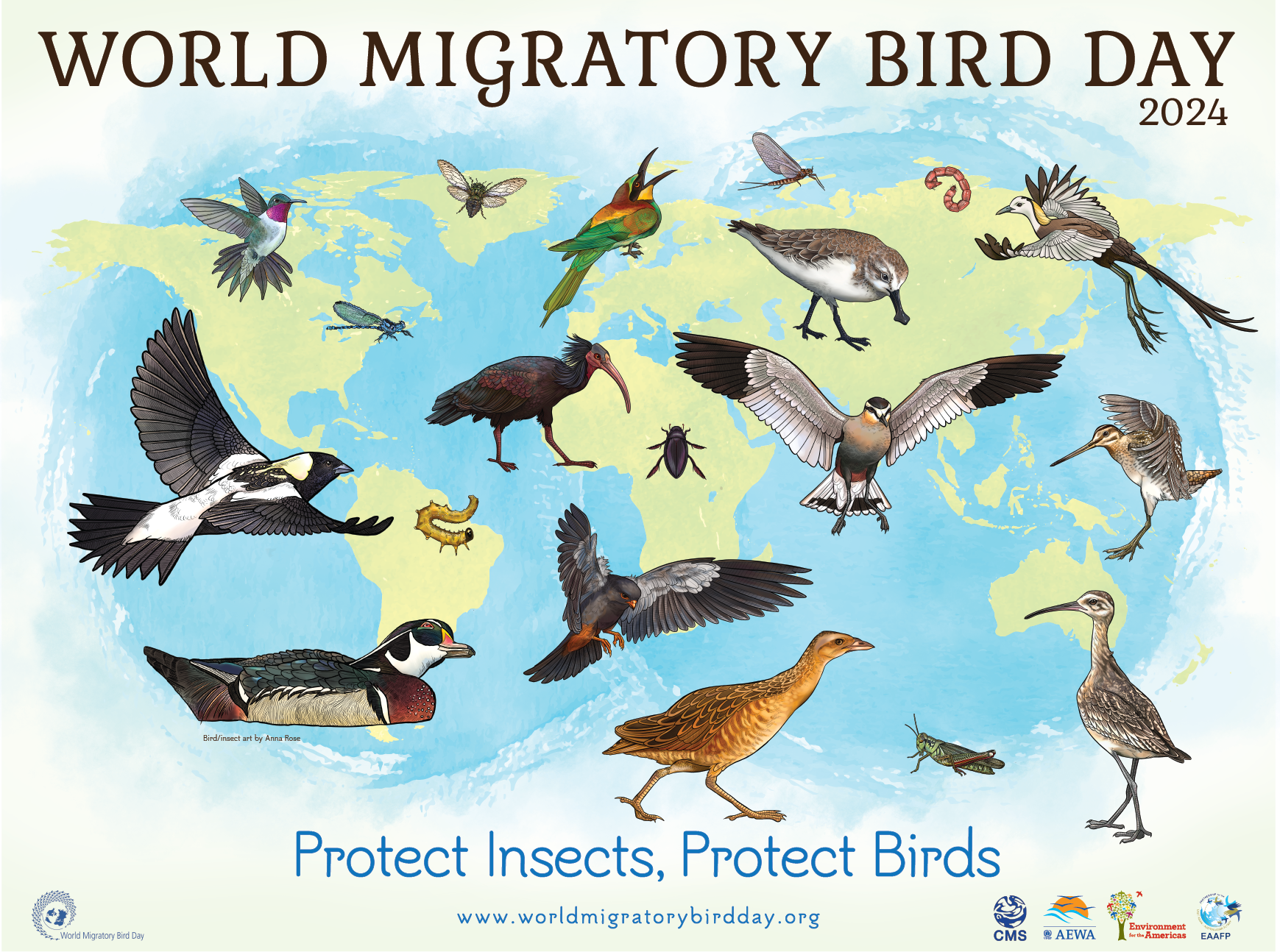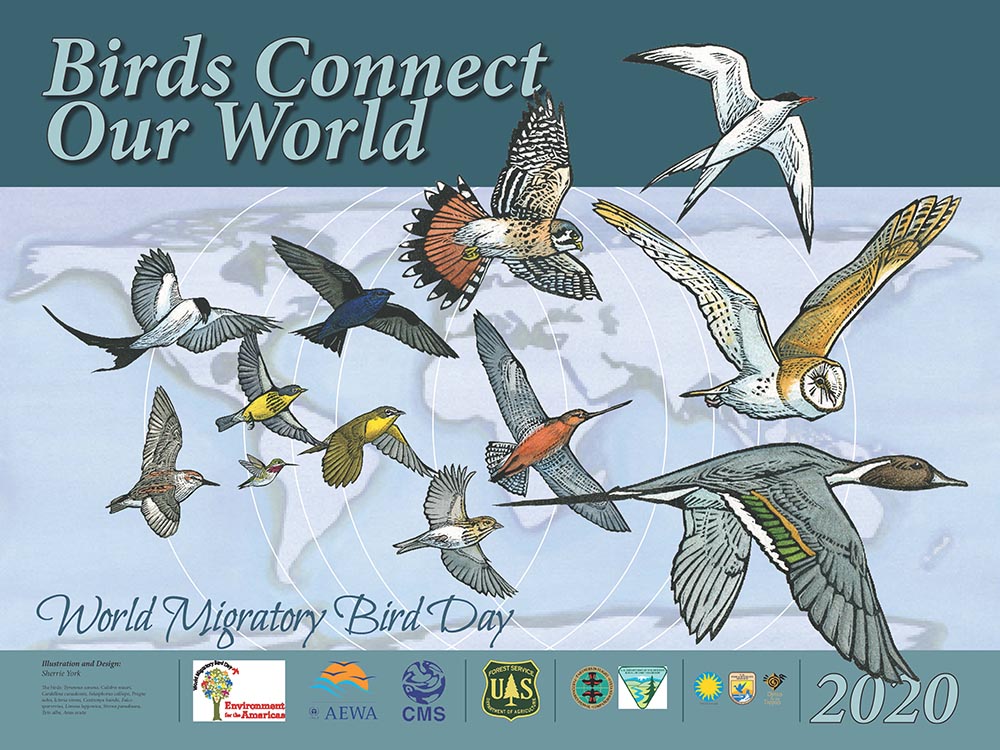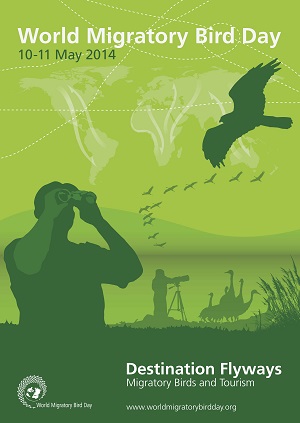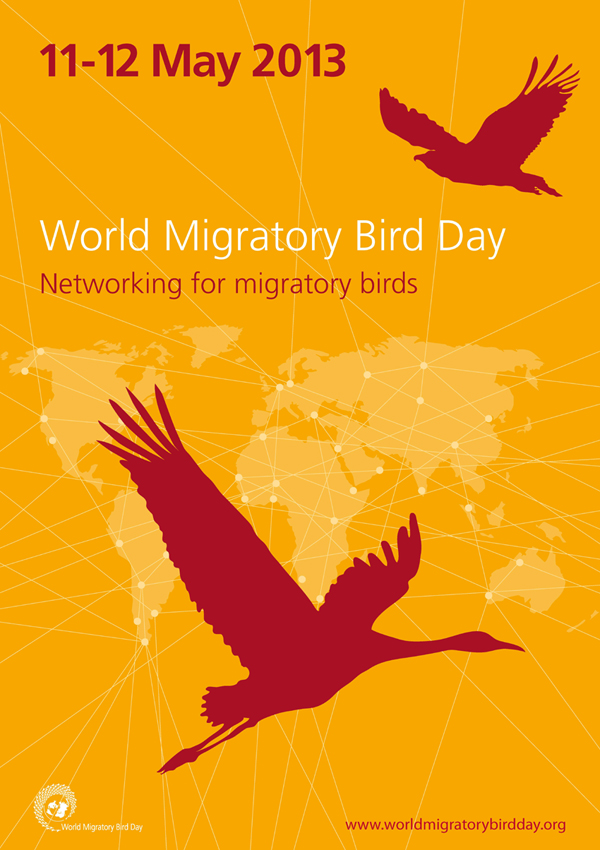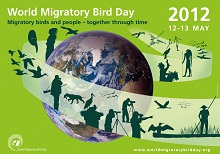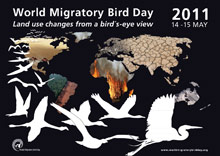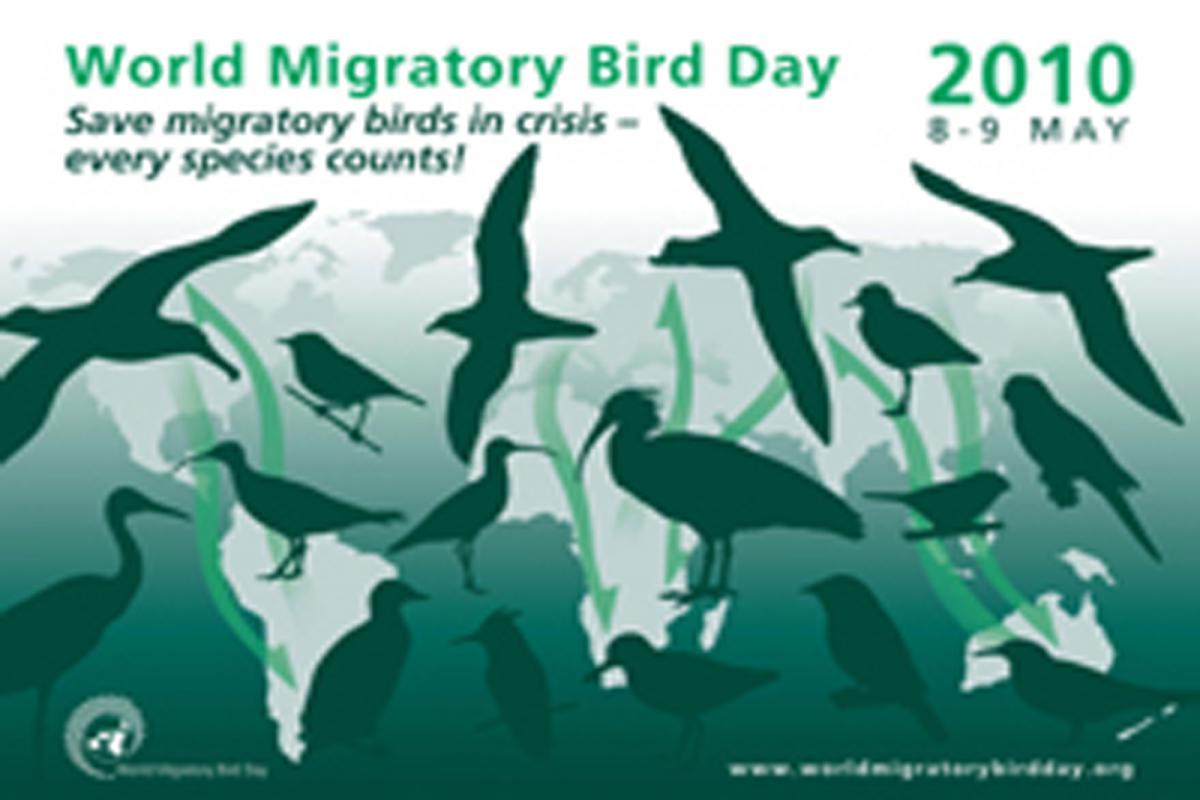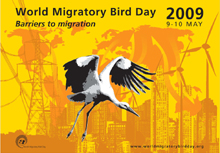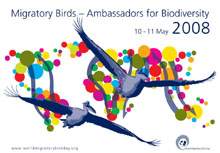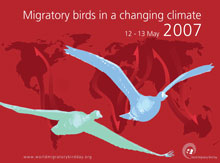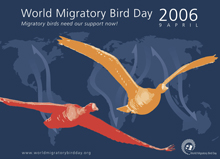You are here
WMBD THEMES SINCE 2006
World Migratory Bird Day 2024
World Migratory Bird Day 2024 was celebrated under the theme "Protect Insects, Protect Birds!" highlightening the importance of insects for migratory birds and concerns related to decreasing populations of insects. Insects are essential sources of energy for many migratory bird species, not only during the breeding seasons but also during their extensive journeys and greatly affect the timing, duration, and overall success of bird migrations.Along their migration routes, birds actively seek out insects in fields, forests, wetlands, and various habitats during stopovers. The timing of bird migration often coincides with peak insect abundance at stopover locations, supplying nourishment for birds to replenish their energy reserves before continuing their journeys.
World Migratory Bird Day 2023
“Water: Sustaining Bird Life!” was the theme of World Migratory Bird Day in 2023. Water is fundamental to sustaining life on our planet. Virtually all migratory birds rely on water and its associated habitats at some point during their life cycles. Lakes, rivers, streams, ponds, wetlands, and coastal waters are all vital for feeding, drinking, or nesting, and as places to rest and refuel during long seasonal migrations. Unfortunately, these aquatic ecosystems are becoming increasingly threatened around the world, and so are the migratory birds that depend on them. The increasing human demand for water, as well as pollution and climate change, is having a direct impact on the quantity and quality of water resources and on the conservation status of many migratory bird species.
World Migratory Bird Day 2022
“Dim the Lights for Birds at Night” was the theme of World Migratory Bird Day in 2022, focusing on the topic of light pollution and its impact on migratory birds. The campaign stimulated hundreds of events in all corners of the world and helped focus global attention on the topic of light pollution. Light pollution is a significant and growing threat to wildlife including many species of migratory birds. Every year, light pollution contributes to the death of millions of birds. Attracted by artificial light at night, particularly when there is low cloud, fog, or rain or when flying at lower altitudes, migrating birds become disoriented and may end up circulating in illuminated areas. Depleted energy reserves put them at risk of exhaustion, predation, and often fatal collision with buildings. One of the highlights of the campaign was the production of a 2-minute animation showing the impact of light pollution on a small migratory songbird. The clip was produced in cooperation with The Cornell Lab of Ornithology and was made available in all UN languages.
World Migratory Bird Day 2021
“Sing, Fly, Soar – Like a Bird!” was the theme for WMBD 2021, focusing on the phenomena of “bird song” and “bird flight”. This was used as a way to inspire and connect people around the world in their shared desire to celebrate migratory birds and to unite around a common, global effort to protect birds and their habitats. During the pandemic, bird song has been a source of comfort and joy for many people around the world, connecting them to each other as well as to nature. Although the pandemic has been an unprecedented challenge for humankind, it has brought a new level of awareness and appreciation of birds and the importance of nature for our well-being. For WMBD 2021, the SING and DANCE #LikeABird challenge was created to invite people to use their creative expression as a way to raise awareness of migratory birds and their conservation.
World Migratory Bird Day 2020
“Birds Connect Our World” was the theme for WMBD 2020. Connectivity is essential for migratory species, and important for a wide variety of ecological functions. It describes the natural and necessary movement of species and the flow of natural processes that sustain life on Earth. With 1 million species facing the risk of extinction within our generation, connectivity has become a central topic for biodiversity and sustainability. Migratory species move across the globe, running, swimming, flying, connecting countries, people and continents through their migration routes. This migration can only be accomplished when animals are able to access the different sites and habitats that they rely upon along their pathways.
World Migratory Bird Day 2019
“Protect Birds: Be the Solution to Plastic Pollution” was the theme for WMBD 2019, marking the fight against the global threat of plastic pollution. With an annual production of more than 300 million tons, plastic is one of the most widely used materials in the world. Whether through ingestion or entanglement, it takes its toll on migratory birds. For WMBD 2019, clean-ups were organized across the world to remove plastic from important bird areas, while awareness raising campaigns and bird watching events brought people together to combat the threat of plastic pollution. Though 2019 is over, we urge everyone to continue to Reduce, Reuse, and Recycle plastic as much as possible.
World Migratory Bird Day 2018
The year 2018 marks a new start for World Migratory Bird Day as it now unifies the planet’s major migratory bird corridors, or flyways, namely the African-Eurasian, the East Asian-Australasian, and the Americas flyways. Furthermore, to make celebrations even more successful and relevant to bird supporters all over the world, WMBD will now have two peak celebration days in the year - the second Saturdays of May and October - and can in addition still also be celebrated all around the year, whenever migratory birds are present in a given locality. Therefore 2018 is an important transition year in the history of World Migratory Bird Day. Bringing together even more people around the world, WMBD aims to reach out to a broader audience and amplify its message for bird conservation. As a new global platform that unifies efforts worldwide, WMBD will be reinforcing education and awareness-raising about the need to protect migratory birds and their habitats - at all different levels, in all parts of the world.
World Migratory Bird Day 2017
With the 2017 theme "Their Future is our Future", WMBD will throw light on the topic of "Sustainable Development for Wildlife and People". WMBD 2017 will highlight the interdependence of people and nature, and more especially people and migratory animals - in particular birds, as they share the same planet and thus the same limited resources. The 2017 campaign will aim at raising awareness on the need for a sustainable management of our natural resources, demonstrating that birds conservation is also crucial for the future of humankind.
World Migratory Bird Day 2016
With the theme “Stop the illegal killing, taking and trade of Migratory Birds!”, WMBD 2016 highlighted the existensial threat of the illegal killing, taking and trade of migratory birds and the need for a concerted action between governments, International organizations, NGOs and the civil society in order to end this phenomenon that each year kills millions of birds.
In the eleventh edition of WMBD, 319 events were registered from 85 countries around the world.
World Migratory Bird Day 2015
With the theme “Energy – make it bird-friendly!”, WMBD 2015 highlighted the importance of deploying energy technologies in a way that prevents, minimizes and mitigates impacts on migratory birds and their habitats.
In the tenth edition of WMBD, 219 events were registered globally, and it also marked the 20th anniversary year of AEWA – the Agreement on the Conservation of African-Eurasian Migratory Waterbirds – whose Secretariat together with the Secretariat of the Convention on the Conservation of Migratory Species of Wild Animals (CMS) are the organizational drivers for this unique campaign.
World Migratory Bird Day 2014
With the theme “Destination Flyways: Migratory Birds and Tourism”, WMBD 2014 highlighted the links between migratory bird conservation, local community development and wildlife watching tourism around the world.
For the first time, more than 400 events took place in 85 countries - a new record number that shows increasing commitment to migratory bird conservation around the world.
World Migratory Bird Day 2013
A record 345 events in 86 countries were carried out to mark World Migratory Bird Day 2013 under the theme "Networking for migratory birds".
Each and every one of these events represents a unique activity which brought people together around the world to celebrate and help raise awareness about migratory birds on 11-12 May 2013!
World Migratory Bird Day 2012
In 2012 the World Migratory Bird Day theme focused on the cultural relationship between birds and people. Throughout time and across cultures humans have relied on birds, be it to supply food, to deliver messages, or to serve as symbols of power and prestige. Amazingly more than 250 events were registered in 81 countries around the world on May 12th and 13th, showing an increase of 25% from 2011 and an expansion of three-fold since its inception in 2006!
World Migratory Bird Day 2011
The year 2011 was for World Migratory Bird Day absolute record breaker thanks to an amazing 204 registered events in 64 countries worldwide. It was celebrated on 14th and 15th May 2011 and focused on conversion of natural areas into agricultural land, the construction of buildings, roads and dams, or deforestation, which are just some examples for the human use of land, also known as land use, while migratory bird populations are particularly sensitive to these changes.
World Migratory Bird Day 2010
On 8-9 May 2010 World Migratory Bird Day was celebrated in over 40 countries around the world. Under the theme “Save migratory birds in crisis - every species counts!”, over 90 registered events took place worldwide. The 2010 campaign was closely linked to the International Year of Biodiversity and raised awareness on globally threatened migratory birds, with a particular focus on those on the very edge of extinction – the Critically Endangered migratory birds.
World Migratory Bird Day 2009
On 9-10 May 2009 World Migratory Bird Day was celebrated in over 50 countries around the world. Under the theme “Barriers to migration”, 130 registered events took place. These events helped to raise awareness on man-made barriers and demonstrated that obstacles such as wind turbines, power lines and tall buildings pose a threat to migratory birds.
World Migratory Bird Day 2008
Under the theme “Migratory Birds – Ambassadors for Biodiversity”, World Migratory Bird Day (WMBD) was celebrated for the third time on 10-11 May 2008. Over 136 activities took place in 59 countries around the world to mark World Migratory Bird Day in 2008 and the events helped spread the idea of migratory birds as messengers for the conservation of biodiversity worldwide.
World Migratory Bird Day 2007
In 2007, World Migratory Bird Day was celebrated in more than 58 countries and with more than 100 different events all across the planet on 12-13 May. The theme “Migratory birds in a changing climate” helped to focus the world’s attention on the plight migratory birds are facing due to global warming. WMBD activities highlighted the effects that increasing temperatures, altered rainfall and vacillating weather conditions have on migratory birds.
World Migratory Bird Day 2006
The first World Migratory Bird Day took place on 8-9 April, 2006. At the time, migratory birds were receiving very negative media coverage as a result of them being falsely believed to be the main cause for the spread of Avian Influenza (H5N1) around the world. So the idea arose to use the first World Migratory Bird Day to counter some of the negative and often unbalanced publicity migratory birds were receiving at the peak of the Avian Influenza discussion. For this reason the theme of the first World Migratory Bird Day in 2006 became: “Migratory birds need our support now!”. The centre of the campaign was a launching event called WINGS which took place on the edge of the Great Rift Valley in Kenya and was hosted by Ms. Kuki Gallman, a famous writer and conservationist. Altogether, 68 other WMBD related events took place in all corners of the world to support the launch and the very first WMBD campaign.

